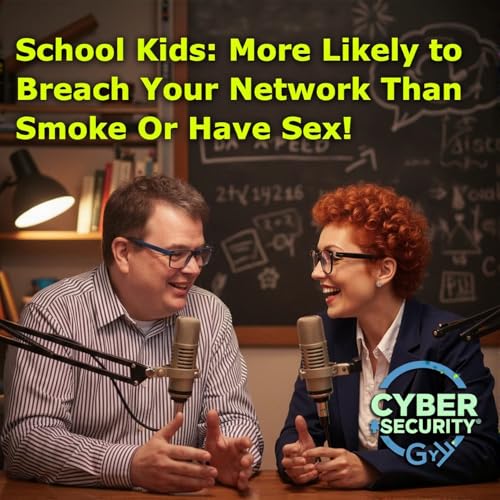Join hosts Noel Bradford and Mauven McLeod in this Back-to-School special of the Small Business Cybersecurity Guy podcast as they trace a line from 1980s schoolroom mischief to modern, large-scale breaches that put millions of students and small organisations at risk. Through recollections of early BBC Model B and Novell-era antics, the episode uses real recent incidents to expose how weak passwords, written credentials and opportunistic insiders create systemic security failures.
The episode unpacks headline-making investigations and statistics — including the ICO analysis showing that students are behind a majority of school data breaches, the PowerSchool compromise that affected tens of millions of records and led to extortion demands, and targeted campaigns such as Vice Society and the evolving Kiddo International incident. The hosts explain the motivations behind student-led breaches (curiosity, dares, financial gain, and revenge) and how those same drivers also appear within small businesses.
Noel and Mauven explain why insider threats matter, even when they aren’t sophisticated: most breaches exploit simple weaknesses, such as reused or guessable passwords, written notes, shared admin accounts, and a lack of access controls. Producer Graham contributes a live update on ongoing incidents, and the episode highlights how these events translate into operational disruptions — including school closures, days of downtime, and long-term reputational and legal fallout.
Practical defence is the episode’s focus: clear, actionable guidance covers immediate steps (audit access, enable multi-factor authentication, remove unnecessary privileges), short-term actions (implement logging and monitoring, deploy password managers, set up incident response procedures) and longer-term resilience measures (regular access reviews, backups, staff training and cultural change). The hosts emphasise designing security around human behaviour so staff follow safe practices instead of working around them.
Listeners will get a concise checklist of recommended technical controls — MFA, role-based access, privileged account separation, activity logging and reliable backups — alongside cultural advice: leadership buy-in, recognisable rewards for good security behaviour, and channels for curious employees to learn responsibly. The episode also highlights regulatory shifts, such as the introduction of mandatory Cyber Essentials for certain educational institutions, and links these requirements to small business risk management.
Expect vivid anecdotes, practical takeaways and a clear call-to-action: if a curious teenager can bypass your systems, it’s time to harden them. Whether you run a two-person firm or a growing small business, this episode provides the context, evidence, and step-by-step priorities to reduce insider risk, detect misuse quickly, and recover from incidents without compromising your customers’ trust.
 10 min
10 min 18 min
18 min 41 min
41 min 8 min
8 min 19 min
19 min 41 min
41 min 41 min
41 min 13 min
13 min

